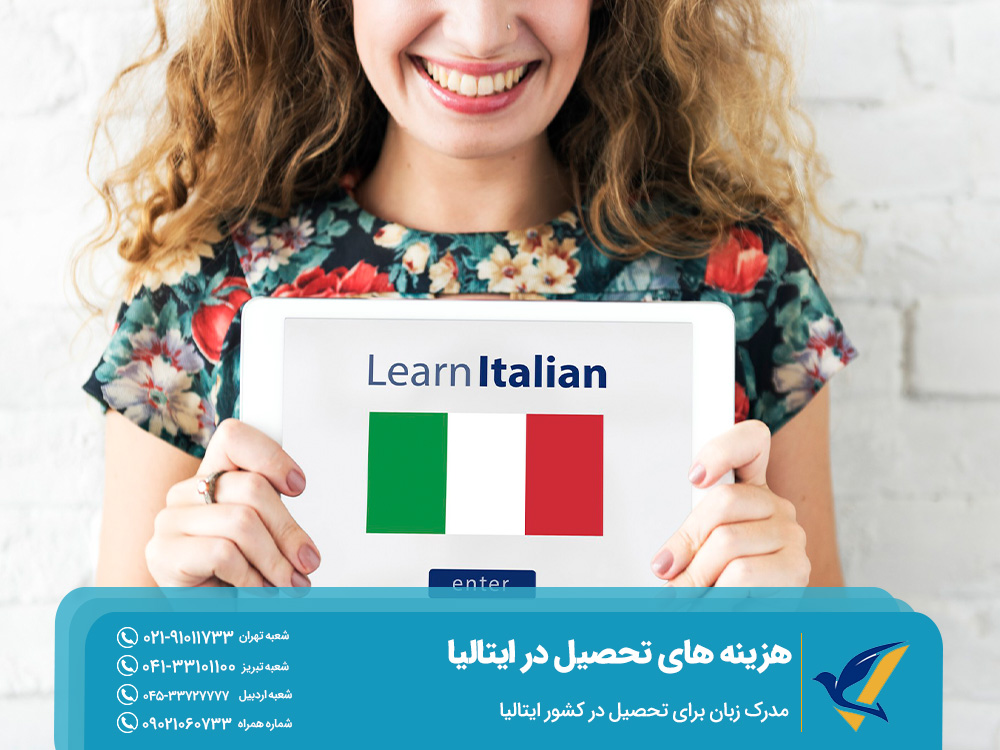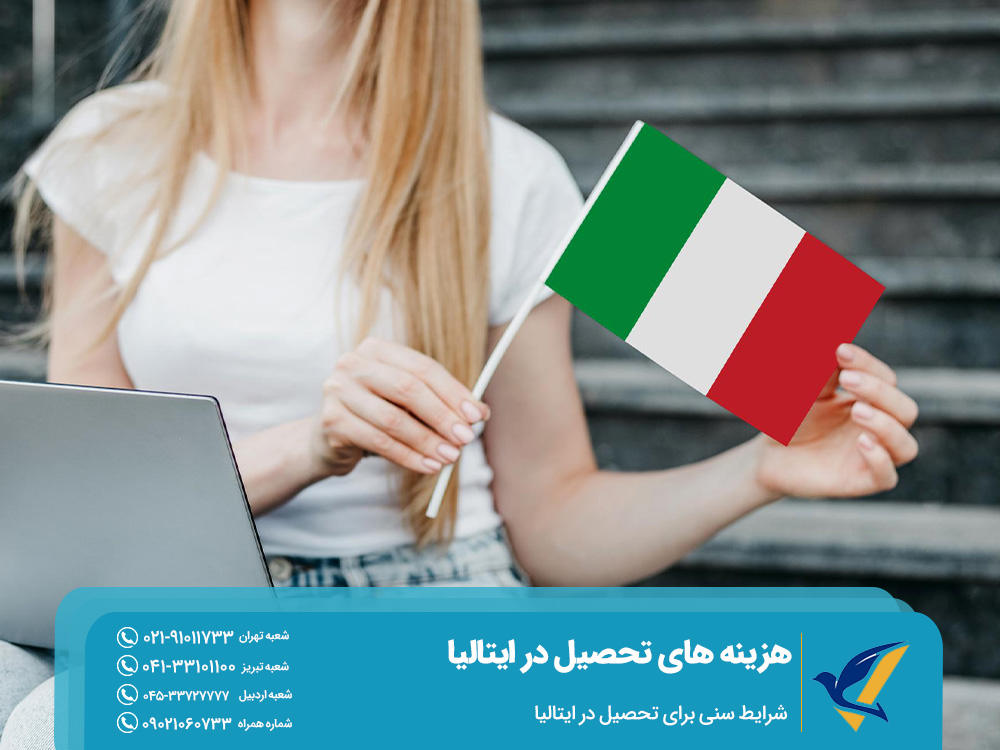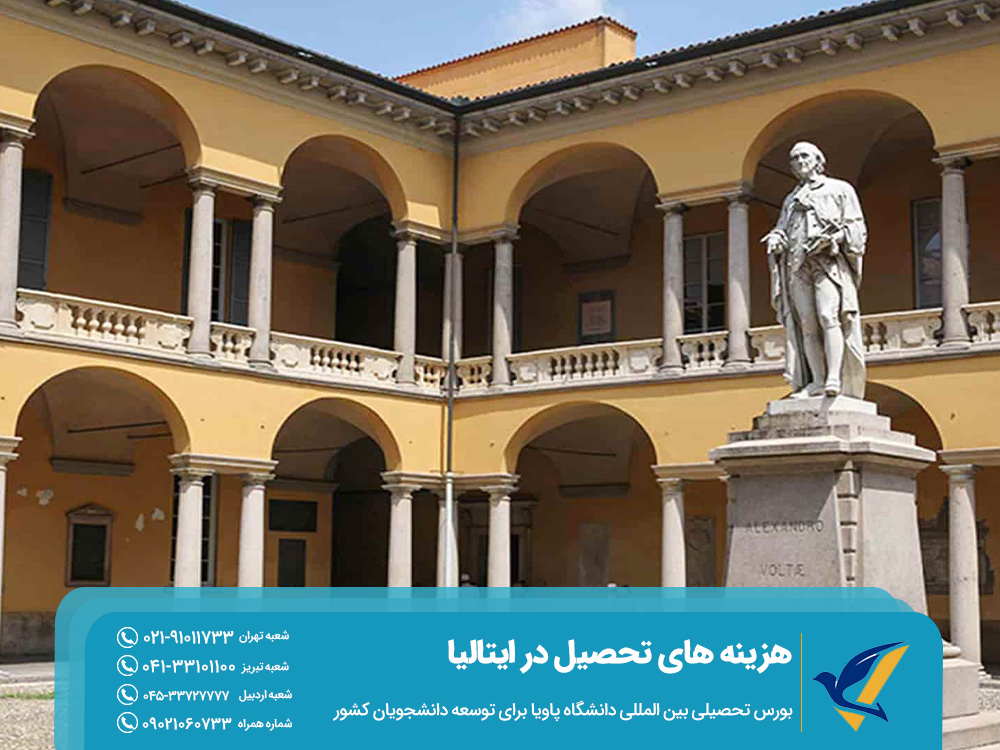As you may know, studying in Italy and attending its prestigious universities can significantly boost your future success. Additionally, the cost of education in Italy is much more affordable compared to other developed countries. The combination of affordable student living expenses, the beautiful Mediterranean climate, and Italy’s rich culture and history make it an attractive destination for higher education.
It’s important to note that universities in Italy are divided into public and private institutions. Almost every industry and field has educational programs available, and the tuition fees in Italy are remarkably low given the quality of education. In this article, we aim to provide you with more information about the costs and requirements for studying in Italy.

Study Conditions in Italy
In general, studying in Italy in 2023 has improved, especially after the COVID-19 pandemic. As a member of the European Union, Italy maintains high standards in various fields such as healthcare, social services, insurance coverage, and more. Moreover, the cost of education in Italy is very affordable considering the high quality of education.
Italy and Iran share a rich historical and cultural heritage, which is visible in the daily life and culture of both countries. The study system in Italy is structured as follows:
- Primary education starts at age 5 and lasts for 5 years.
- Following primary education, students enter a 3-year middle school program where subjects like mathematics and basic sciences are heavily emphasized. Internal exams are conducted at the end of this stage.
- After middle school, students attend a 5-year high school program and take national exams, earning a “Diploma di Maturità.”
Italy is home to many prestigious universities with a long history, and its affordable tuition fees make it an attractive option compared to other European countries. Students can also benefit from various scholarships, drawing thousands of applicants each year from both inside and outside Europe. The language of instruction is both Italian and English, and more than 170 programs are offered at the undergraduate, master’s, and doctoral levels.
Required Documents for Admission to Italian Universities
Due to the affordable cost of education in Italy, many students choose it as their destination for higher education. The following documents are generally required for admission to Italian universities:
- Translated high school diploma and transcripts
- Translated pre-university diploma and transcripts
- Translated bachelor’s degree and transcripts
- Translated master’s degree and transcripts
- Proof of language proficiency (e.g., IELTS score of 6 or B2 in Italian)
- A proposal (especially for doctoral students)
- Language proficiency certificate
- An ISI paper (especially for doctoral programs)
Please note that these requirements are generally for all fields, but may vary based on the program level and specific university conditions. To obtain an Italian language certification, applicants must pass the CELI or CILS exams and achieve the required score before applying for a student visa to Italy.

Language Requirements for Studying in Italy
Proficiency in Italian or English is essential for admission to many universities in Italy, in addition to the affordable tuition fees. The required minimum language proficiency score varies between universities, so it’s important to check the specific requirements on the university’s website. However, the typical language proficiency requirements for English exams are as follows:
- IELTS: Minimum score of 6 (Cost: $210–250)
- TOEFL: Minimum score of 78 (Cost: $245)
- TOLIMO: Minimum score of 600 (Cost in 2021: around 1.5 million IRR)
- FCE: Minimum score of 169 (Cost: approximately 350,000 IRR)
For Italian exams, the minimum proficiency level is usually B1, with equivalent scores in the following tests:
- CELI: B1 level
- CILS: B1 level
- ROMA TRE: B1 level
- DANTE ALIGHIERI: B1 level
The cost of these exams is determined by the institutions offering them.
Studying in Italy Without a Language Certificate
Students wishing to study in Italy without a language certificate should have sufficient knowledge of the Italian language for daily life in Italy. For admission to universities, students need to complete a basic level of Italian language education. Most universities require an Italian language certificate, such as CILS or CELI, for international students.
However, students whose native language is English may be exempt from submitting a TOEFL or IELTS score. If applicants are not proficient in Italian at the time of application, many universities offer courses in English, specifically for international students.
It’s important to note that the language exam fees are determined by the respective testing institutions.

Age Requirements for Studying in Italy
In general, the age requirements for studying in Italy depend on the level of study and the type of university a student plans to attend. For most postgraduate programs (Master’s and Ph.D.), there is typically no specific age restriction. However, for undergraduate (Bachelor’s) programs, age limits may apply, especially considering the affordability of tuition fees in Italy.
Students from the European Union might be exempt from age restrictions under certain regulations, depending on the program. On the other hand, for non-EU students pursuing Master’s or Ph.D. programs, age restrictions are generally more flexible. However, each university and program may have its specific conditions.
Tuition Fees and Free Education in Italy Without a Language Certificate
Apart from being affordable, many study programs in Italy are taught in Italian, and some universities may require international students to provide proof of Italian language proficiency (such as CELI or CILS certificates) for admission into these programs. These certificates indicate the student’s level of proficiency in Italian.
If you do not have an Italian language certificate, you might consider enrolling in a language preparation course before beginning your studies. Some universities or institutions may offer these courses themselves or recommend external language centers.
Additionally, some universities offer courses in English, particularly at the Master’s and Ph.D. levels. In such cases, an Italian language certificate may not be required, but do note that English-taught programs may be more limited in number.

Best Study Programs in Italy
Italy is known not only for its rich historical and tourist attractions but also for its high-quality education system. Many study programs in Italy are offered in English, attracting international students. Here are some of the most popular study fields:
- Computer Science and Technology
- Art and Design
- Architecture and Civil Engineering
- Social Studies
- Humanities
- Medicine and Healthcare
- Professional Teaching (for teaching, university professors, etc.)
- Marketing and Sales
- Hospitality
Among these, Art, Design, Architecture, and Humanities are particularly in demand at the Master’s level and offer high-income prospects in Italy. Italy is the birthplace of numerous influential fashion designers like Gucci, Versace, Armani, and Roberto Cavalli, making it a top destination for students pursuing fashion and design. Cities such as Rome, Milan, and Turin are renowned for their programs in these fields.
Cost of Studying in Italy
The cost of studying in Italy is relatively affordable compared to other European countries. Here’s a general breakdown:
- Bachelor’s and Master’s Degrees: Tuition ranges from €1,000 to €7,500 per year, depending on the university and program. Scholarships and fee reductions of up to 90% may be available based on certain criteria.
- Ph.D. Programs: Tuition at public universities ranges from €140 to €1,200 per year.
- Private Universities: They generally have higher tuition fees, ranging from €6,000 to €20,000 annually.
Here is a breakdown of tuition fees for some of Italy’s top universities according to the QS World University Rankings:
- Polytechnic University of Milan: €889 to €3,892
- University of Bologna: €500 to €1,400
- University of Rome – La Sapienza: €1,200 to €2,800
- University of Padua: €2,533 to €2,948
- University of Milan: Over €5,856
- Polytechnic University of Turin: Over €3,821
- University of Pisa: €2,400
- Vita-Salute San Raffaele University: Over €20,000
- University of Naples Federico II: €1,500
- University of Trento: €1,000 to €5,600
These fees give an overall idea of the cost of education in Italy, but it’s always best to check individual university websites for specific fee details.

Scholarships for Student Visa in Italy
Italy offers a variety of scholarships to international students, which can greatly reduce tuition costs and make studying there more affordable. Some of the most common types of scholarships are government scholarships, university-specific scholarships, and DSU scholarships. Here are some essential points about obtaining a scholarship and the conditions involved:
- Age Requirements:
- For Master’s programs, the maximum age is 28.
- For PhD programs, the maximum age is 30.
- For research projects, the maximum age is 40.
- Academic Performance:
- A minimum GPA of 17 for Bachelor’s programs and 16 for Master’s programs is generally required.
- Scholarships Available:
- EDISU PIEMONTE Scholarship:
- Students from non-EU countries can apply for the EDISU PIEMONTE scholarship to study full-time Bachelor’s, Master’s, or PhD programs in universities like the University of Turin. This scholarship is based on financial need and merit, and it may also offer accommodation services for non-resident students.
- University of Bologna Scholarships:
- The University of Bologna offers scholarships for international students who are eligible and wish to enroll in Bachelor’s, Master’s, or specialized courses. This scholarship provides an annual stipend of €11,059 and a full tuition fee exemption.
These scholarships, along with financial aid, make Italy an attractive destination for international students. For more information, you should check the specific university websites or scholarship portals.

International Scholarship at the University of Pavia for Students from Developing Countries
The University of Pavia (UNIPV) offers a scholarship aimed at increasing international cooperation with developing countries. This scholarship is for outstanding students from developing nations wishing to pursue a Master’s degree in English at the University of Pavia. The value of each scholarship is approximately €8,000, helping students cover their tuition fees and living expenses.
Summary
This article highlights the conditions and costs associated with studying in Italy. While some universities may require additional specific documents, fluctuations in currency exchange rates can also affect the overall cost of living. To ensure a smooth application process, especially for obtaining a student visa, it’s advisable to consult reputable immigration institutions. Elm Vira Immigration provides up-to-date and precise information about student visas in Italy, offering free consultations via their website.
میانگین امتیازات 5 از 5
Vote count: 1 Vote